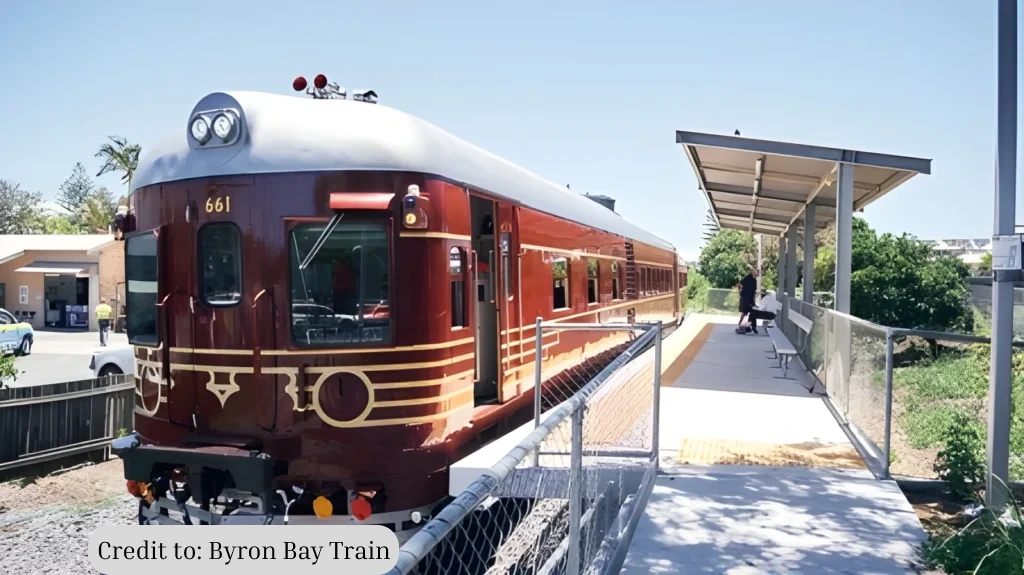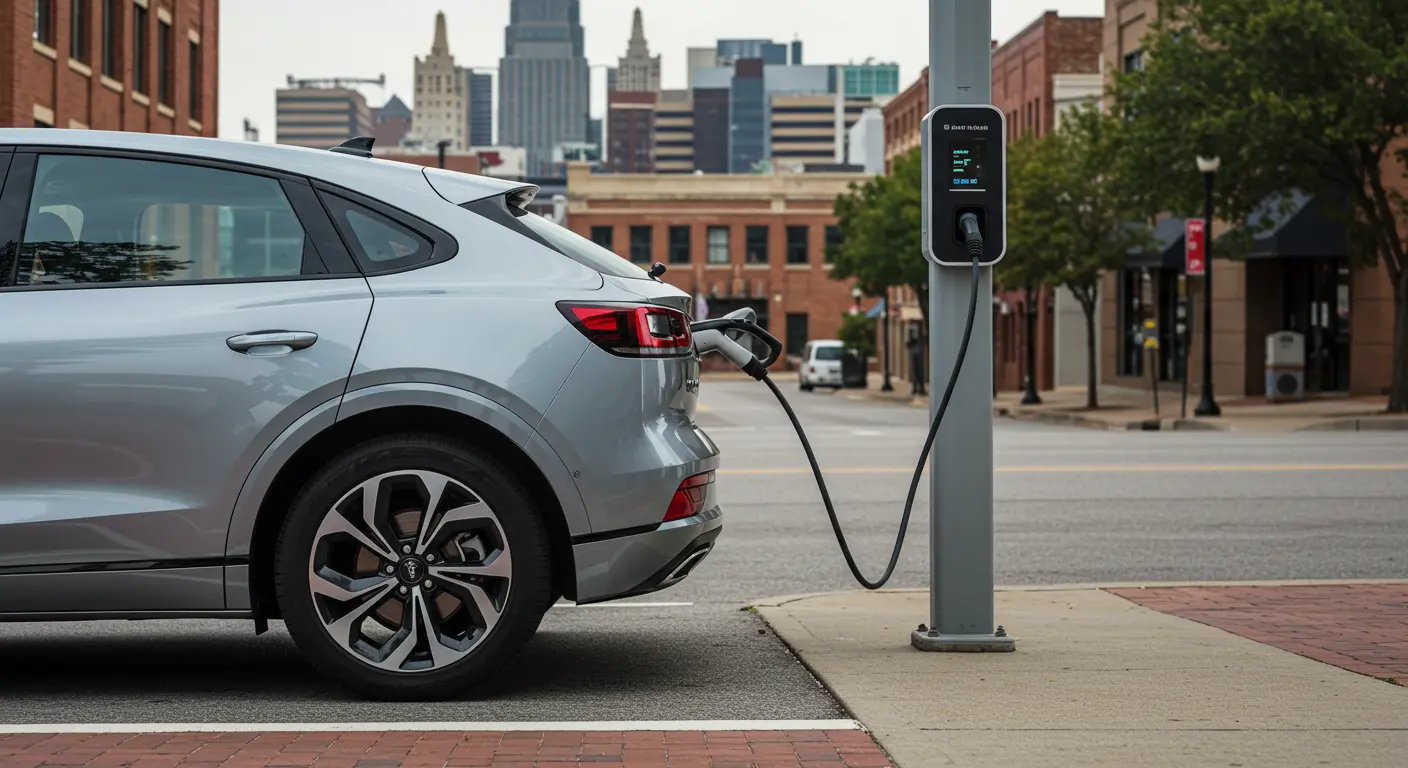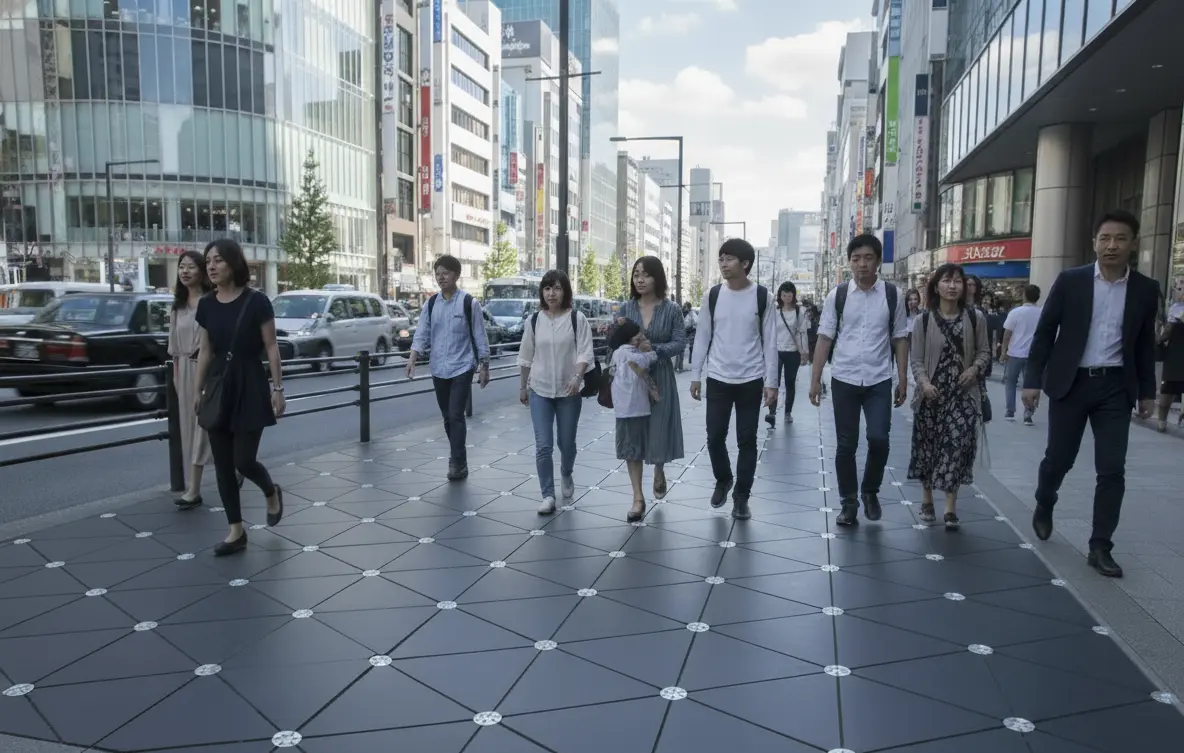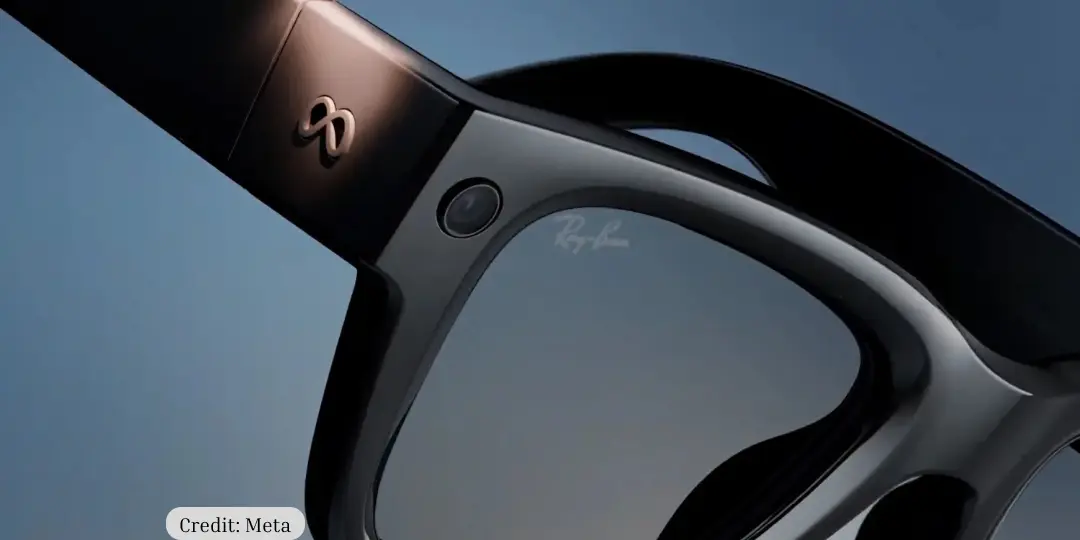In Byron Bay, New South Wales, a 1949 two-carriage diesel train has been reborn as the world’s first fully solar-powered passenger service. Operating along a 3 km coastal track, the Byron Bay Solar Train combines heritage preservation with renewable energy, running solely on sunlight without the need for fuel, overhead wires, or emissions.
This project is more than just a tourist attraction. It shows how old railway vehicles can be given a second life with clean technology. By updating a vintage train with modern solar and battery systems, the Byron Bay Solar Train proves that historic infrastructure can continue to serve communities while reducing environmental impact.
Blending its original 1940s design with modern engineering, the train has become a working example of sustainable transport and a symbol of how the past and future can meet in one project.
From Diesel to Solar – The Retrofit Process
Original Design and Heritage Background
The Byron Bay train was built in 1949 at Sydney’s Chullora Railway Workshops as part of the 600-class railmotors. Its lightweight aluminium body, inspired by aircraft construction methods, made it significantly lighter than conventional steel-bodied stock.
This innovative design not only reduced fuel consumption during its diesel years but also proved vital for the later solar conversion.
Because the railcar was lighter than most passenger trains, its propulsion energy needs were lower, enabling the retrofit to succeed with a lithium-ion battery bank and modest solar arrays while still providing reliable daily service.
Technical Conversion
- Electric Motors: One of the original diesel engines was replaced with twin AC traction motors, providing smooth, high-torque propulsion.
- Battery Bank: A 77 kWh lithium-ion battery stores solar energy. It powers up to 12–15 round-trip trips on the 3 km route per charge.
- Regenerative Braking: The system recovers approximately 25% of the expended energy, feeding it back into the batteries.
- Backup Diesel: One Cummins 14L diesel engine remains in place, now inactive except for weight balance and emergency use.
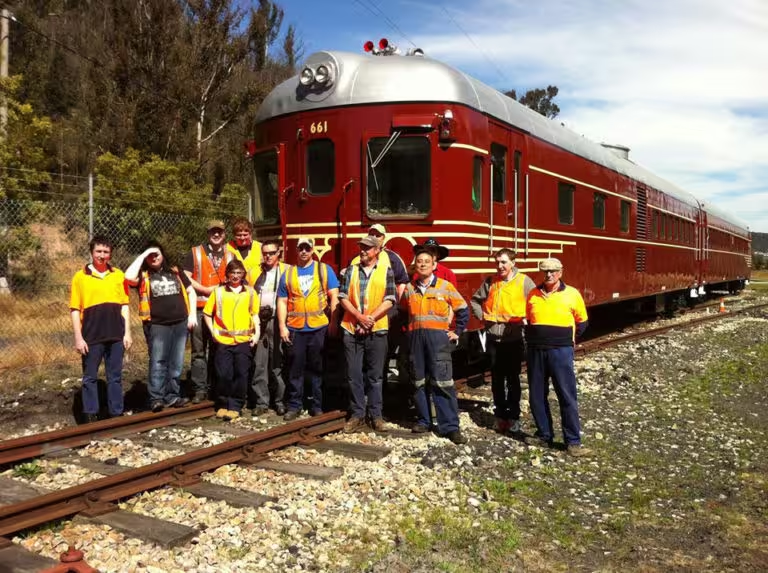
Infrastructure and Launch
- The track, once part of the long-disused Murwillumbah line, underwent significant rehabilitation, including the relaying of sleepers, repair of bridges, and refurbishment of two stations to meet modern safety standards.
- After this extensive upgrade, the solar train began passenger service in December 2017, operating almost year-round (364 days annually) as both a community shuttle and tourist attraction.
Table 1: Byron Bay Solar Train – Technical Specifications
| Feature | 1949/1970s Diesel Spec | 2017 Solar Conversion |
|---|---|---|
| Propulsion | 2 × Cummins NT855-R2 diesels | 2 × 220 kW AC motors |
| Energy Storage | Diesel fuel tanks | 77 kWh lithium-ion battery |
| Onboard Generation | Diesel alternator | 6.5 kW flexible solar panels |
| Station Power | None | 30 kW solar array on shed roof |
| Recovery System | None | Regenerative braking (~25%) |
| Daily Operation | Diesel refuelling | Solar recharge, 12–15 trips/charge |
Designing the Curved Roof Panels – Engineering Flexibility and Aesthetics
One of the greatest engineering challenges was installing solar panels without altering the train’s curved roofline.
- SunMan eArche Panels: To preserve the vintage silhouette, engineers installed Sunman eArc flexible solar modules, which are just 2 mm thick and around 70 percent lighter than conventional glass panels. Their polymer top sheet, similar to aircraft-grade materials, lets them bend to the train’s curved roofline while withstanding hail and coastal weather.
- Power Capacity: The roof array generates about 6.5 kW of renewable power, enough in bright conditions to both operate the traction motors and recharge the onboard batteries.
- Station Array: To guarantee reliable operation year-round, a 30 kW fixed solar array at North Beach station supplements the roof panels, providing rapid charging on cloudy days or during periods of high demand.
The panels integrate so seamlessly that the train retains its iconic 1940s silhouette. From a distance, its vintage style remains unchanged, an example of aesthetic engineering, technology that respects history while serving modern needs.
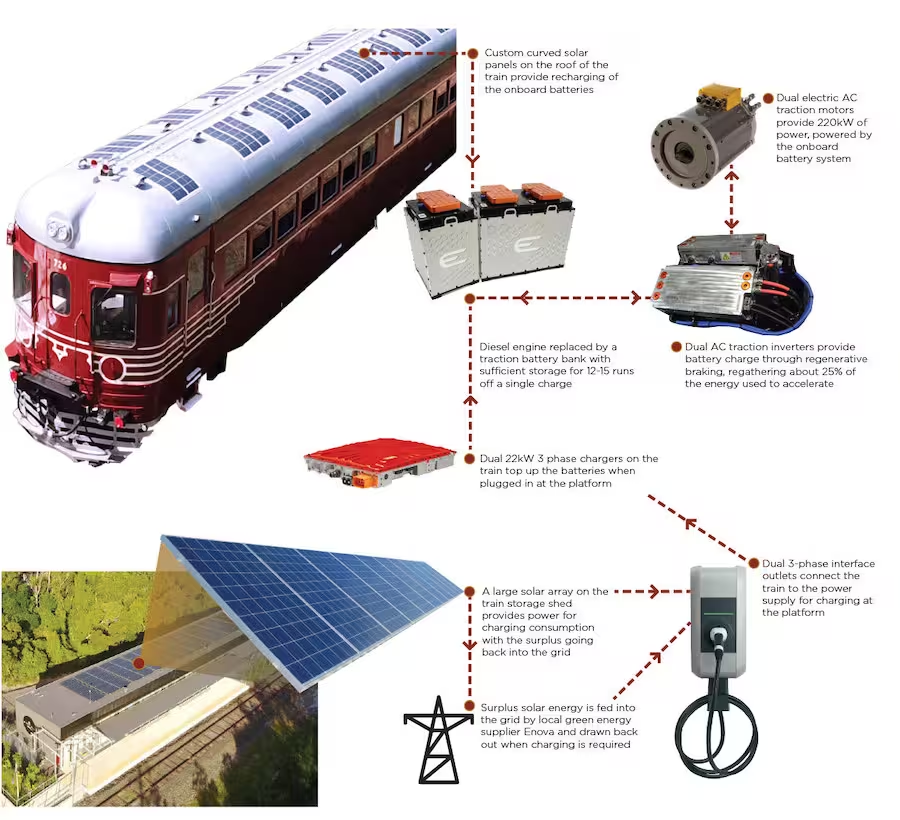
Passenger Experience – Quiet Ride, Vintage Interiors, and Tourist Appeal
Onboard Atmosphere
- The interiors preserve timber panelling, pressed tin ceilings, and original fittings, but now all lighting and systems run on clean electricity.
- First-class still offers lounge-style seating, while coach seating encourages social interaction.
- Original sash windows provide natural ventilation, maintaining the authentic 1940s ambience without the need for modern air-conditioning.
Riding the Route
- The 10-minute journey runs between Byron Beach (town centre) and North Beach (resort area), following a section of track that weaves through diverse coastal landscapes.
- Along the way, passengers see littoral rainforest with native vegetation, sensitive wetlands that support birdlife, and the crossing of Belongil Creek, part of a protected marine park.
- The ride is notably quiet; only the gentle hum of electric motors and the rhythmic sound of wheels on rails remain, creating a tranquil atmosphere that allows riders to fully appreciate the surrounding environment.
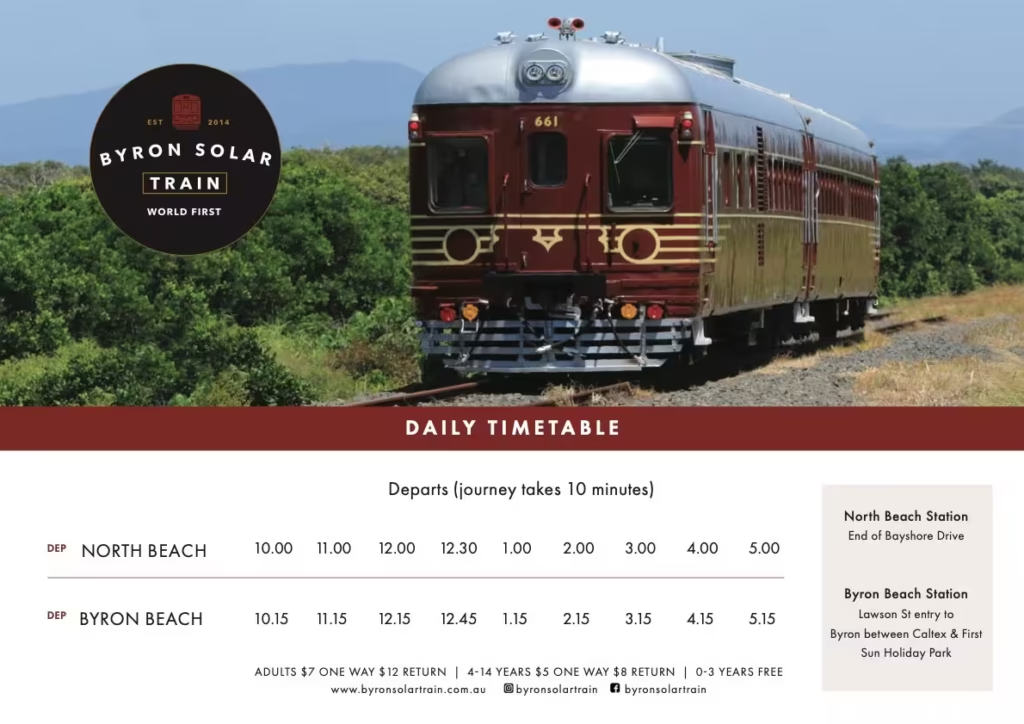
Tourist and Community Impact
- In its first year, the train carried close to 100,000 passengers, serving both locals and eco-tourists.
- Staff in period uniforms enhance the heritage feel, while facilities accommodate wheelchairs, prams, bikes, and surfboards.
Heritage & Sustainability – Lessons for Restoring Historic Vehicles
The Byron Bay Solar Train provides insights for combining heritage preservation with clean transport:
- Reuse of Existing Assets: By restoring a 70-year-old train and a disused rail line, the project avoided new vehicle manufacturing and construction. The operator’s history page details the original 1949 build and the rehabilitation of the Murwillumbah line section.
- Proof of Solar Viability: Unlike earlier experiments that only used solar as a supplement, this project proved that passenger trains can run fully on solar power, setting a global precedent.
- Private Funding Model: Approximately AUD $4 million was invested by local entrepreneurs Peggy and Brian Flannery, showing how private vision can deliver sustainable projects.
- Net-Positive Energy: Only 23% of solar power generated is used by the train; the remaining 77% is exported to the local grid.
- Global Influence: The Clean Energy Regulator notes that the train has drawn interest from international observers, influencing conversations about short-line solar conversions in other countries.
Table 2: Key Sustainability Metrics
| Metric | Value |
|---|---|
| Onboard Solar Capacity | 6.5 kW |
| Station Solar Capacity | 30 kW |
| Battery Capacity | 77 kWh |
| Energy Use per Trip | ~5 kWh |
| Daily Trips Supported | 12–15 |
| Energy Surplus Exported | ~77% of total generation |
Conclusion
The Byron Bay Solar Train demonstrates that history and sustainability can coexist. By reviving a 1949 diesel train with modern solar-electric systems, the project preserved heritage while delivering zero-emission transport. Its success underscores the value of reusing existing infrastructure, applying flexible solar technology, and creating transport that produces more energy than it consumes.
This red train in Byron Bay is more than a tourist attraction; it is a working model of sustainable heritage engineering, influencing global thinking on how to restore the past for a cleaner future.

